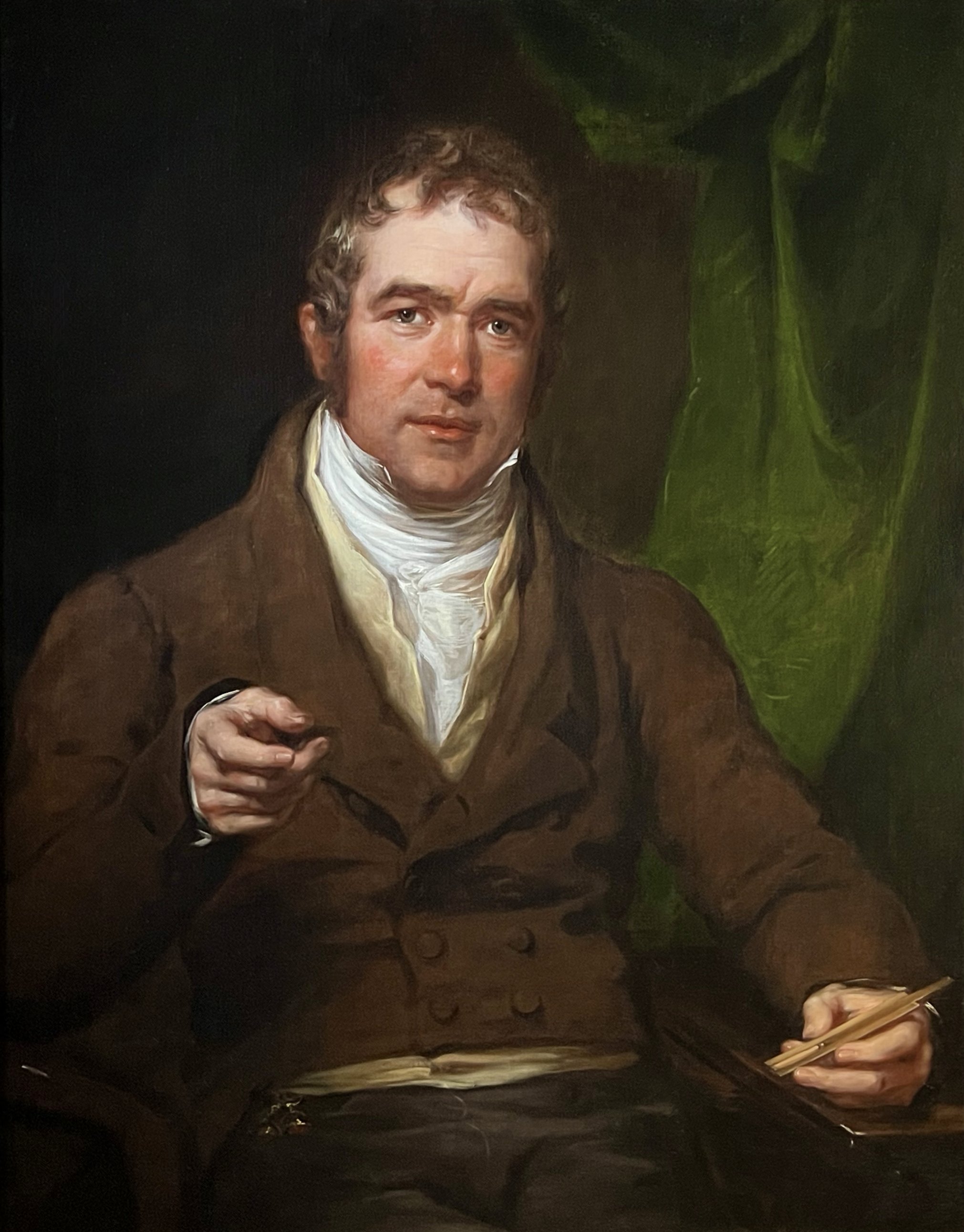
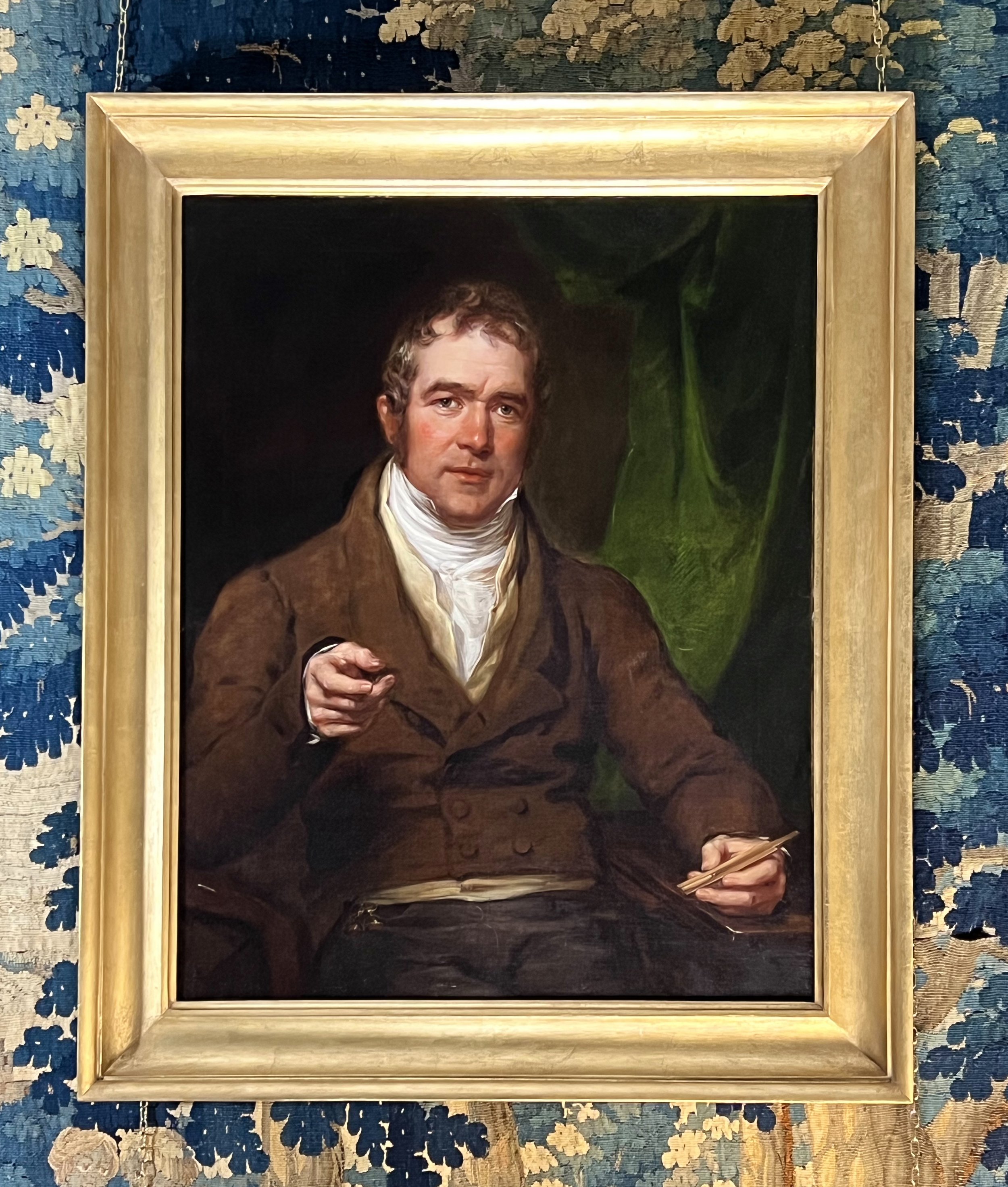
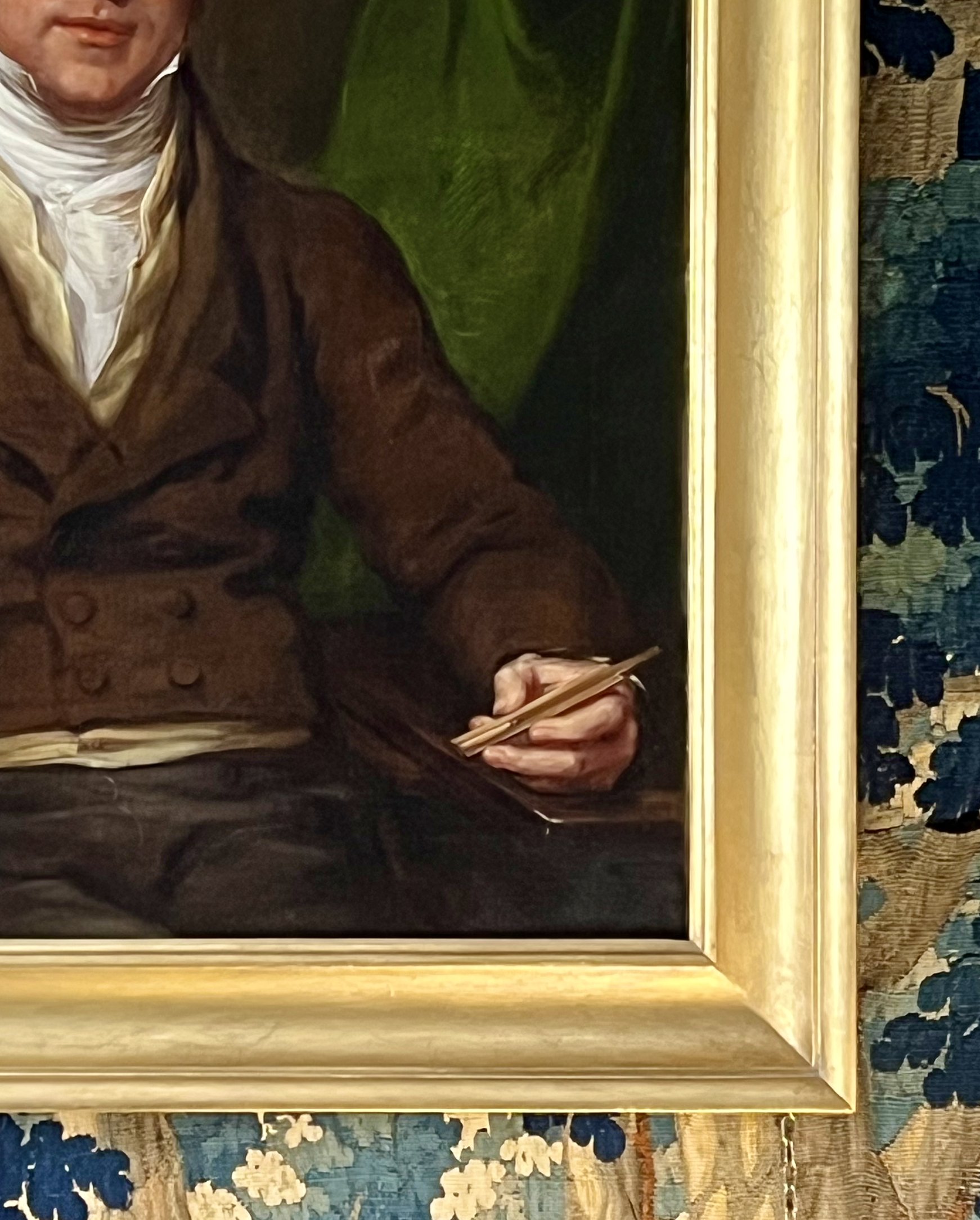
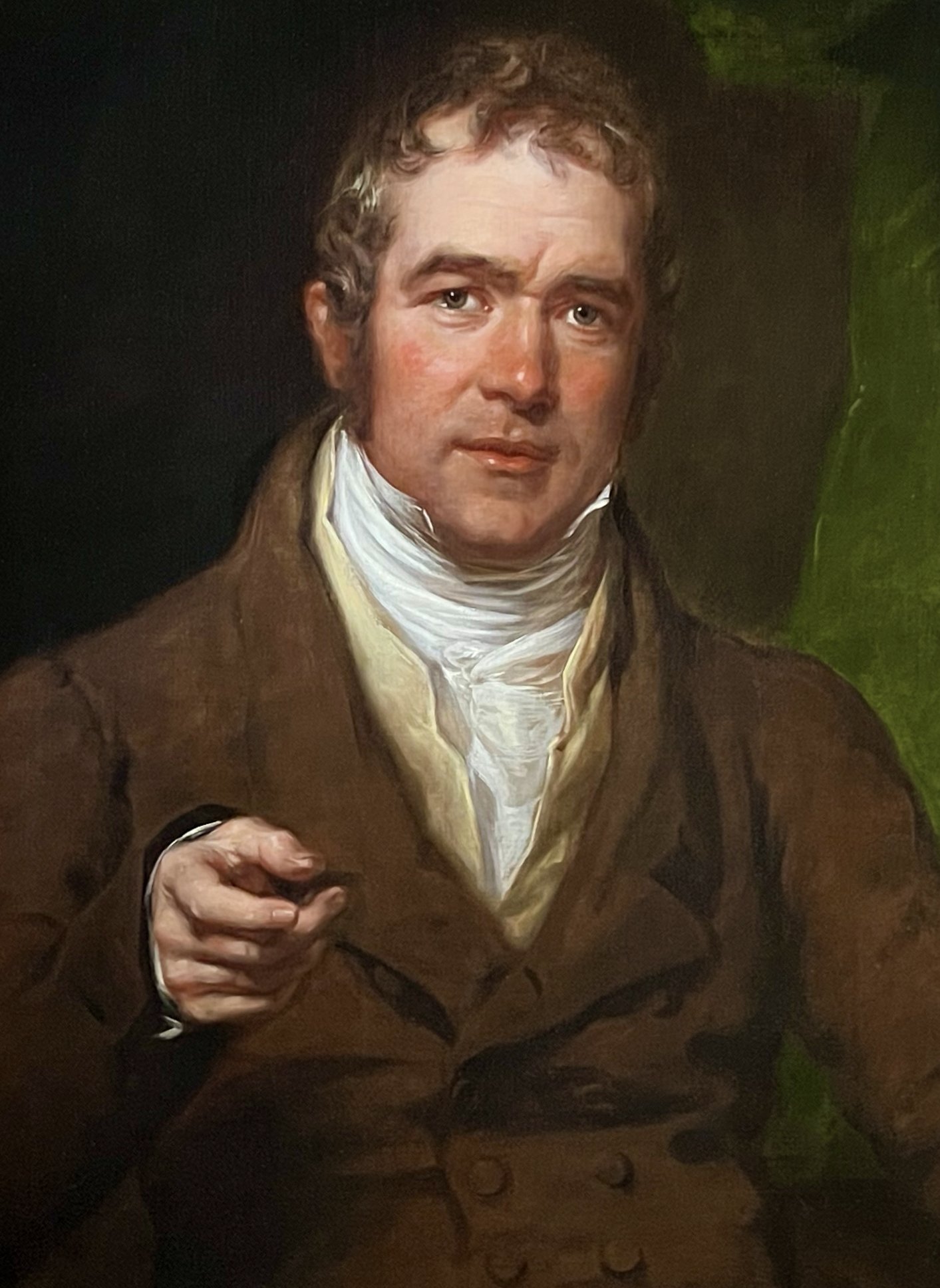
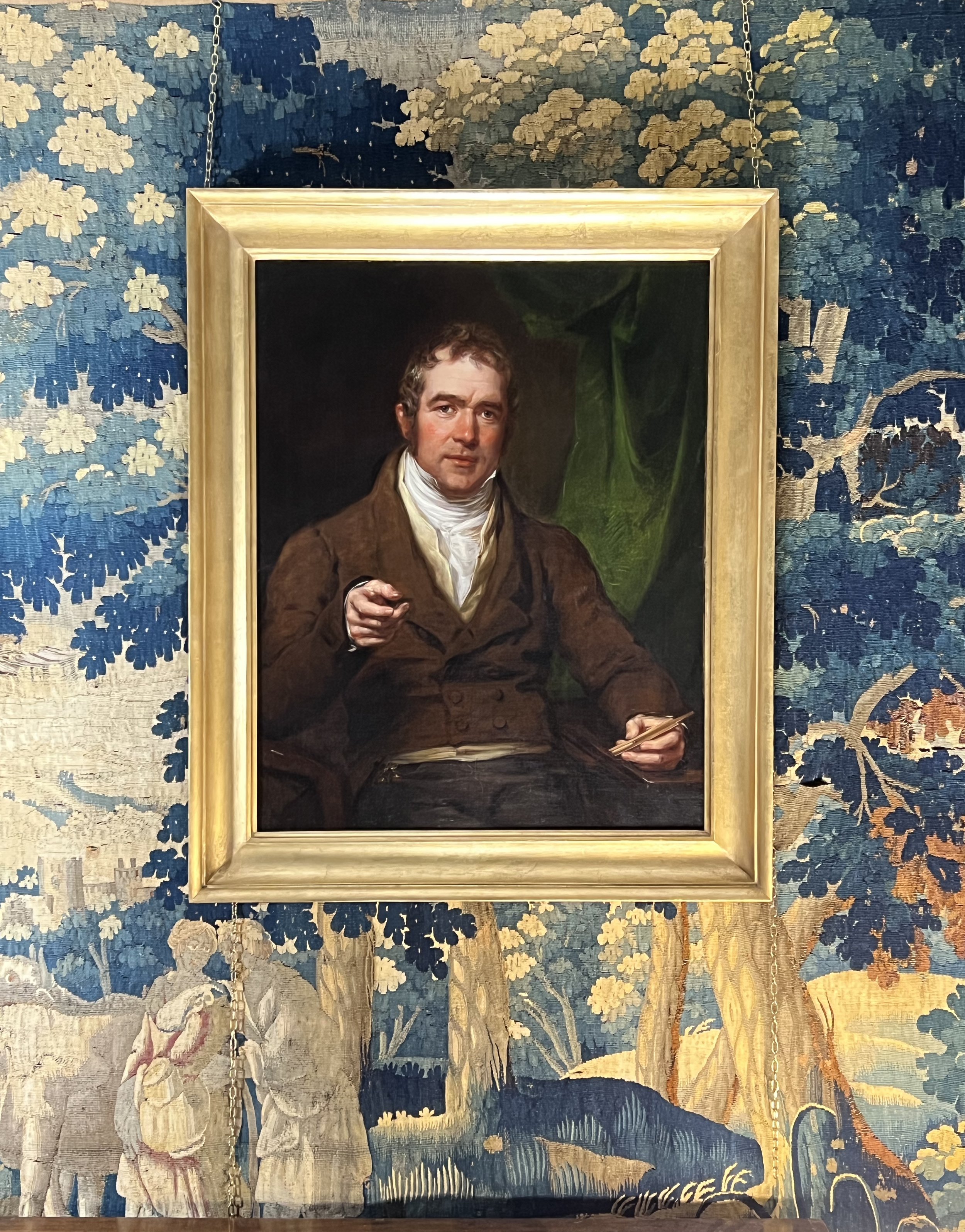
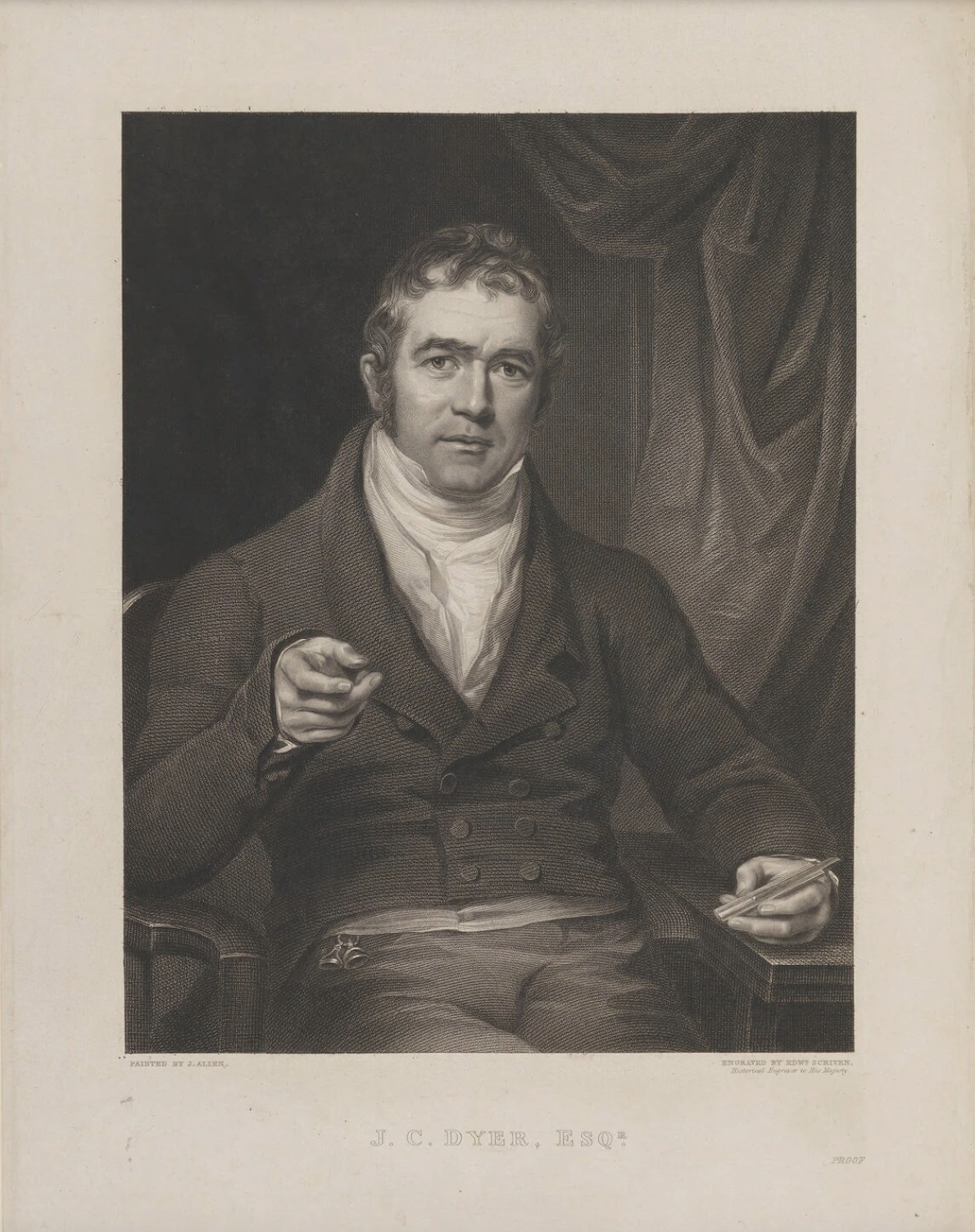
PORTRAIT OF JOSEPH CHESSBOROUGH DYER BY JOSEPH ALLEN (1769 - 1839)
A fine and masterful early 19th century English portrait of the industrialist and inventor Joseph Chessborough Dyer by Joseph Allen (1769 - 1839)
Joseph Allen (1769-1839). Joseph Allen was a celebrated 19th century English portrait painter who was born in Birmingham in 1769. In 1798/9 he settled in Wrexham. He also worked in Liverpool and Manchester and famously founded the Liverpool Academy in 1810.
Joseph Chessborough Dyer (1780-1871) Chessborough Dyer was an inventor, son of Captain Nathaniel Dyer of the Rhode Island navy, was born at Stonnington Point, Connecticut, on 15 Nov. 1780, and educated at the common school of Opdike's Newtown, now called Wickford, Narragansett Bay.
His mother died from hardships she underwent during the storming and burning of New London under Benedict Arnold. Joseph had a turn for mechanics, and when he was a young man he constructed an unsinkable lifeboat, in which he and his father took excursions along the coast.
At the age of sixteen he entered the counting-house of a French refugee named Nancrède, to part of whose business he subsequently succeeded.
He first came to England in 1802, and was frequently in the country from that date until his final settlement here in 1811, when he married Ellen Jones, daughter of Somerset Jones of Gower Street, London.
Joseph devoted himself to mechanics, and was active in introducing into England several American inventions, which became exceedingly profitable to him and others. One of the first of these was Perkins plan for steel-engraving (1809); then followed fur-shearing and nail-making machines (1810), and the carding engine (1811). Fulton sent him drawings and specifications of his steamboat in 1811, and Dyer experienced many difficulties and discouragements in bringing the system into use in England.
In 1825 he took out his first patent for a roving frame used in cotton-spinning, invented by Danforth and subsequently much improved and simplified by himself.
He lived at Camden Town until 1816, when he settled in Manchester.
He was associated with William Tudor in founding the ‘North American Review’ (1815), of which the first four numbers were written by Tudor and himself. He was also concerned in the foundation of the ‘Manchester Guardian’ in 1821.
In 1830 he was a member of a delegation to Paris to take the contributions from the town of Manchester for the relief of the wounded in the revolution of July, and to congratulate Louis-Philippe on his accession. It was claimed that he, as chairman of the Reform League, was instrumental in procuring the prompt recognition of the French king by the British government.
He aided in establishing the Royal Institution and the Mechanical Institution at Manchester; and was one of the original directors of the ill-fated Bank of Manchester, which, after a few years of great prosperity, came by fraud and neglect to a disastrous end, whereby Dyer lost no less than 98,000L.
He engaged in the struggle for parliamentary reform and in the promotion of the Liverpool and Manchester railway, and in later years was closely associated with the Anti-Corn law League, both in its formation and operations.
In 1832 he established machine-making works at Gamaches, Somme, France, which were given up in 1848, having, through mismanagement on the part of an agent, entailed great loss on Dyer.
After the death of his wife in 1842, and when he had relinquished his extensive machine works at Manchester (afterwards carried on by Parr, Curtis, & Madeley), he resided with one or other of his sons, and occupied himself with science, literature, and politics. He contributed to various journals and read a number of papers before the Manchester Literary and Philosophical Society on physics, on political science, and on the origin of certain mechanical inventions. In these last he referred chiefly to the inventions he had himself been instrumental in introducing or developing.
In 1819 he published ‘Specimens and Description of Perkins's and Fairman's Patent Siderographic Plan to Prevent Forgery (of Bank Notes),’ and in 1850 a pamphlet entitled ‘Remarks on Education.’
Jospeh cherished a strong hatred of slavery, and wrote several interesting pamphlets on the subject, both prior to and during the American war. They were: 1. ‘Notes on the Legalised Reclamation of Fugitive Slaves from the Free States of America,’ 1857. 2. ‘Democracy,’ 1859. 3. ‘Notes on the Slave-holders' Mission to England,’ 1860. 4. ‘Notes on Political Mistakes,’ 1862. 5. ‘Letter to William H. Seward,’ 1862. A few months prior to his death he wrote a treatise on ‘Longevity, by a Nonagenarian,’ but the manuscript was lost at a publisher's.
He died at Manchester on 3 May 1871, aged 90. His son, Frederick N. Dyer, was author of ‘The Slave Girl, a Poetical Tale,’ London, 1848, 8vo, and ‘The Step-son, a Novel,’ 2 vols., 1854, 12mo. His youngest son, Wilson Dyer (who died in 1867), was an artist.
The handsome, ruddy cheeked and self assured sitter, is shown seated three quarter length, against emerald green drapery. He is elegantly dressed in the traditional costume of a gentleman of substance, namely a brown double treated tail coat, shimmering yellow silk waistcoat and white high collared shirt and stock. At his waist is a his watch chain and fobs can be glimpsed.
With his head slightly inclined and with a strong sense of purpose Joseph gazes confidently, His dewey eyed and fleeting expression further reveals the artists skill in rendering acute observant character, and the dramatic play of light and shadow across this portrait also help to suggest an individual of great depth.
This fine portrait is in an excellent state of conservation and it is ready to hang and enjoy in its original antique frame which has been sympathetically refinished.
Higher resolution images on request. Worldwide shipping available
Canvas: 36” x 28" / 91cm x 71cm. Framed: 43” x 35" / 109cm x 89cm.
SOLD

